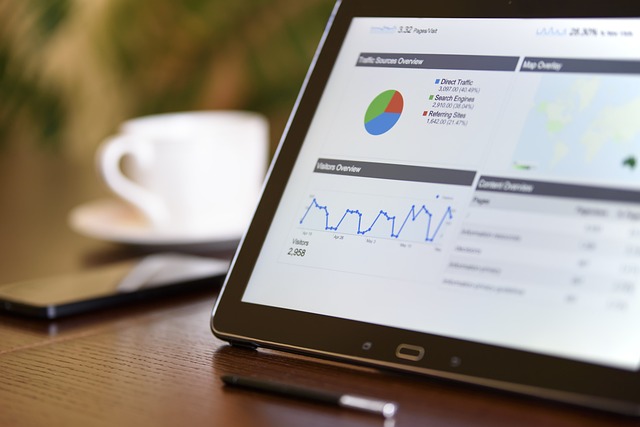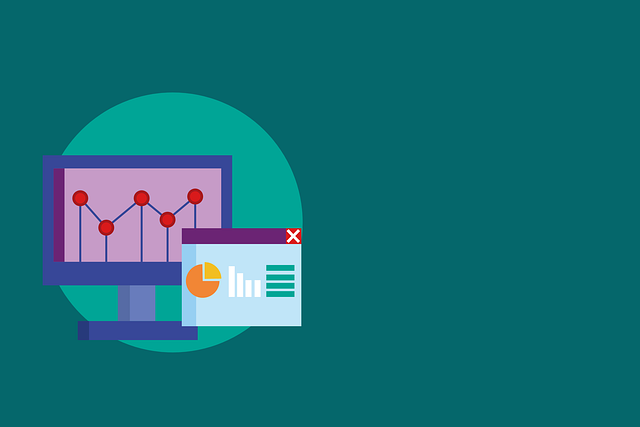Pay-Per-Click (PPC) advertising is a strategic digital marketing tool that boosts business visibility and drives targeted traffic by charging fees based on keyword bids, attracting genuinely interested users. Its agility enables swift campaign setup, budget management, and valuable consumer insights for optimization. PPC allows businesses to achieve immediate online prominence, measurable results in a competitive landscape, and maximized investment returns. With advanced targeting options, retargeting, and optimized ad copy, coupled with KPI tracking, PPC campaigns effectively increase online visibility and conversions. Future trends include AI-driven targeting, real-time data analysis, automated processes, voice search optimization, and AR experiences to stay ahead in the evolving digital marketing landscape.
In the dynamic realm of digital marketing, Pay-Per-Click (PPC) advertising stands out as a potent strategy for businesses aiming to boost online visibility and drive targeted traffic. This comprehensive guide delves into the intricate world of PPC, exploring its foundational concepts, cost structures, and strategic applications. From understanding how these ads capture user attention to unraveling advanced optimization techniques, we navigate through every facet, equipping marketers with essential tools to maximize campaign ROI in today’s competitive digital landscape.
Understanding Pay-Per-Click (PPC) Advertising: A Comprehensive Overview

Pay-Per-Click (PPC) advertising is a powerful strategy within the realm of digital marketing, allowing businesses to reach their target audience with precision and efficiency. It’s a model where advertisers pay a fee each time one of their ads is clicked, typically based on a bidding system for keywords relevant to their products or services. This ensures that only interested users, searching for specific terms, are directed to the advertiser’s website, making it an incredibly targeted and cost-effective approach.
In the fast-paced world of digital marketing, PPC offers immediate visibility and measurable results. Advertisers can set up campaigns quickly, targeting specific demographics, locations, and interests, all while maintaining control over their budget. The beauty of PPC lies in its ability to provide valuable insights into consumer behavior, allowing marketers to refine strategies and bid on the most profitable keywords, thus maximizing returns on investment.
How PPC Ads Work: The Basics of Cost-Per-Click Models

Pay-Per-Click (PPC) ads are a cornerstone of digital marketing, offering businesses a direct and efficient way to reach potential customers online. At its core, PPC advertising is based on a cost-per-click (CPC) model. This means that advertisers pay a fee each time an internet user clicks on their ad. The process starts when marketers create compelling ad campaigns targeting specific keywords relevant to their products or services. These ads are then displayed on search engine results pages or partner websites within advertising networks.
When someone searches for a keyword associated with the campaign, the PPC system evaluates the bids from participating advertisers and determines the order in which the ads will appear. If an internet user clicks on one of these sponsored links, the advertiser is charged based on the pre-set CPC bid. This model provides businesses with precise control over their advertising budgets, allowing them to set daily spending limits and track the performance of each campaign closely.
Benefits and Drawbacks: Weighing the Pros and Cons of PPC Campaigns

Pay-Per-Click (PPC) advertising is a powerful tool in digital marketing, offering both significant benefits and notable drawbacks. One of its key advantages is immediate visibility and targeted reach. Marketers can quickly gain access to potential customers by bidding on keywords relevant to their products or services. This ensures that ads are displayed to an audience genuinely interested in what’s being offered, resulting in a higher conversion rate compared to traditional advertising methods.
However, PPC campaigns also come with certain challenges. The cost-effectiveness can be a concern as bids can vary widely, and managing expenses requires careful strategy and continuous optimization. Additionally, while PPC provides precise targeting, it may not capture the broader brand awareness and organic search results that other marketing channels offer. Therefore, for digital marketers, balancing these pros and cons is essential to create successful and sustainable PPC campaigns.
Targeting Options in Digital Marketing: Reach Your Audience Effectively

In the realm of digital marketing, effective targeting is the key to success in Pay-Per-Click (PPC) advertising. With vast online audiences, advertisers must navigate a complex landscape to reach their ideal customers. The good news is that modern PPC platforms offer sophisticated targeting options that enable precise delivery of ad campaigns. Demographic targeting allows for selection based on age, gender, and location, ensuring ads appear before relevant users. Additionally, interest-based targeting utilizes user behavior data, showing ads related to specific interests or topics they’ve shown interest in previously.
Contextual targeting is another powerful strategy, where ads are placed within relevant web pages or applications based on the content being consumed. This method guarantees that the audience is actively engaged and more likely to convert. Moreover, retargeting, or remarketing, enables advertisers to reach users who have previously interacted with their brand, fostering a sense of familiarity and encouraging repeat engagement. These diverse targeting options empower marketers to create highly tailored campaigns, maximizing ROI and ensuring ads resonate with the intended audience in the vast digital marketing sphere.
Optimizing PPC Ad Copy: Crafting Compelling Calls to Action

In the dynamic landscape of digital marketing, Pay-Per-Click (PPC) advertising stands as a powerful tool for businesses aiming to boost their online visibility and drive conversions. Optimizing PPC ad copy is an art that goes beyond catchy phrases; it’s about creating compelling calls to action (CTAs) that resonate with the target audience. Effective CTAs are concise, urgent, and clearly communicate the next step desired from the potential customer, be it “Shop Now,” “Learn More,” or “Sign Up.”
Crafting compelling CTAs involves understanding your audience’s pain points and desires. Use language that evokes a sense of urgency, scarcity, or exclusivity to encourage immediate action. For instance, phrases like “Limited Time Offer” or “Only a Few Left” can nudge users towards clicking. Moreover, aligning the CTA with the ad’s promise is crucial; if the ad highlights free shipping, the CTA should reflect this benefit to create a seamless connection that drives conversions effectively within the realm of PPC advertising.
Measuring Success: Key Performance Indicators (KPIs) for PPC Advertising

Measuring success is a critical aspect of PPC advertising, allowing marketers to understand the effectiveness of their campaigns and optimize strategies for better results. Key Performance Indicators (KPIs) provide insights into various elements of digital marketing efforts. For PPC, some essential KPIs include click-through rate (CTR), which gauges the number of clicks on an ad relative to impressions; cost per click (CPC), tracking the average amount paid for each click; and conversion rate, measuring the percentage of visitors who complete a desired action, such as making a purchase or filling out a form.
These metrics enable marketers to assess not only the visibility of their ads but also their ability to drive meaningful interactions and conversions. By regularly monitoring these KPIs, businesses can make data-driven decisions, fine-tune campaigns, and ensure their PPC investments yield substantial returns in the competitive landscape of digital marketing.
Advanced Strategies for Maximizing PPC Campaign ROI

In the dynamic realm of digital marketing, Pay-Per-Click (PPC) campaigns offer a powerful tool for businesses to reach their target audience with precision. To maximize Return on Investment (ROI), advanced strategies can be employed. One such tactic is keyword optimization, where precise and relevant keywords are selected to ensure ads appear in front of the right customers. This involves extensive research to identify long-tail keywords that have less competition but high intent.
Additionally, continuous testing and bid management are crucial. A/B testing different ad copies, landing pages, and offers allows for data-driven decisions, improving click-through rates (CTRs) and reducing costs. Automated bidding strategies can help optimize campaigns by adjusting bids based on performance metrics, ensuring the budget is allocated efficiently. By combining these advanced techniques, marketers can enhance campaign performance, driving more qualified traffic and boosting conversions in today’s competitive digital landscape.
Future Trends in Pay-Per-Click Advertising: What's Next?

The future of Pay-Per-Click (PPC) advertising is brimming with innovation, driven by advancements in digital marketing technologies. One prominent trend is the increased use of artificial intelligence (AI) and machine learning algorithms. These tools will enable more precise targeting based on user behaviour, preferences, and even real-time data analysis, optimising ad campaigns for higher conversion rates. AI can also automate ad placement, bidding, and creative development, allowing marketers to focus on strategic planning.
Another notable shift is the integration of voice search optimization into PPC strategies. As voice assistants become more ubiquitous, understanding how users interact with these technologies is crucial. This involves optimising ads for natural language queries and focusing on providing concise, relevant answers rather than just links. Additionally, with the rise of augmented reality (AR), marketers can expect to see AR-enhanced ad experiences, where potential customers can virtually interact with products, revolutionising the way brands engage their audience in the digital realm.
